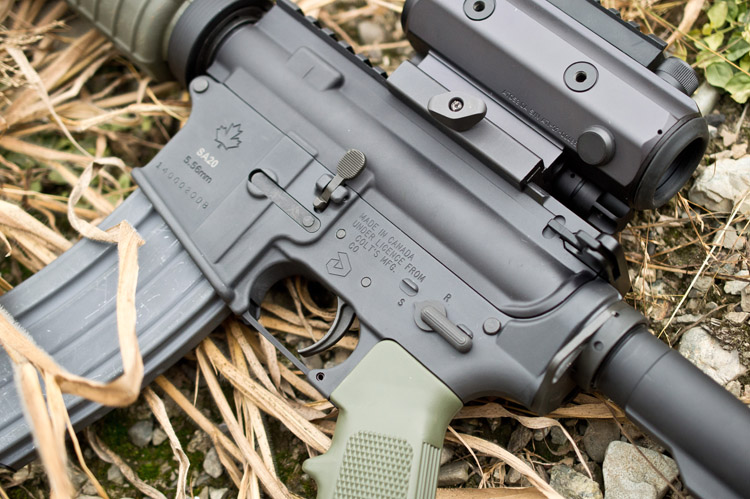
Throughout the smorgasbord of new firearms that have come into this country as of late, the tumultuous reclassification of Swiss and Czech firearms, and the other various headlines we here at Calibre have seen cross our layouts recently, the subject matter of these next few pages is some of the most contentious we've encountered: The unveiling of the very first Colt Canada rifles to be made available to the public... and their associated price tags.
So let's get that particular bone of contention out of the way immediately. These are not cheap rifles. In order to obtain the 20" barrelled SA20 model, one was initially expected to shell out approximately $2,200, while the more expensive SA15.7 carbine model tacked on an additional $200. That was roughly $1,000 more than the various American-made Colt rifles many gun enthusiasts were quick to compare the Diemaco product to. However, the rifles' Alberta-based distributor, Korth Group, has since lowered the suggested retail price to $1,799 and $1,999, respectively. But while that certainly helps, they still aren't cheap.
And it does not help that these expensive rifles look, to be blunt, like very cheap rifles. Held anything more than a few metres away, even the most staunch AR-15enthusiast would be hard pressed to tell a Diemaco SA20 or SA15.7 from a Colt 6920... or a Norinco, for that matter. There's no flashy anodized colours beyond the military standard black finish, there's no whiz-bang fluting carved into the barrel, and there's no high-speed, low-drag muzzle brakes or magazine well flares. But look a bit closer and some differences begin to become apparent. For example, the limited edition ru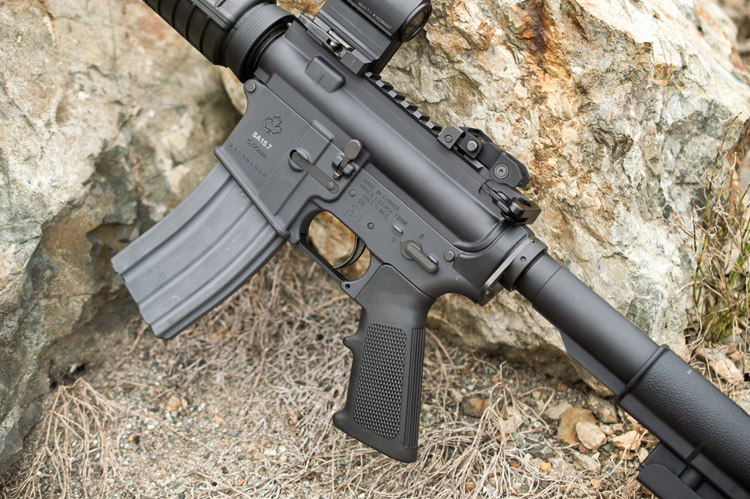
But while those precious embossed characters and the associated "Made in Canada" script emblazoned on the receiver may be nice to see, they are a far cry from the Diemaco rifles' most interesting features. On conventional AR-15 rifles, the castle nut that retains the receiver extension tube is a standard castle nut design with four exposed notches around its rear circumference. On the Diemaco rifles the receiver extension tube is retained by a completely smooth "castle nut" that has just one solitary hole drilled into it in order to allow it to be tightened and loosened. This avoids exposing any sharp edges on the rear of the castle nut, which in turn prevents cuts as the rifle is handled or the stock collapsed. Smart.
Speaking of the stock, both the SA20 and SA15.7 come fitted with Diemaco-specific Fiberlite furniture that while looking quite basic, is in fact quite selectively chosen. While the hand guards may look like traditional plastic round grips identical to those found on any other rifle they are actually incredibly strong pieces of nylon reinforced polymer. Beyond the different material, they also feature small notches and tabs on opposing sides of the hand guards that interlock with one another in such a manner that the top and bottom cannot slide left nor right. This makes for a very solid hand guard. And the stock, which has six positions as opposed to the military's four, is also unique. Again made of a that nylon reinforced polymer concoction it is incredibly bland to look at, with none of the nooks, crannies, and little pockets that make even the most basic aftermarket stocks so visually interesting. But that isn't an accident nor laziness on the part of the designer; the stock has been specifically designed to be readily decontaminated. In the event of a police issue carbine getting blood on it, or a soldier's rifles getting some form of chemical agent on it, the Diemaco stock allows for easy and reliable decontamination, as there are no hard-to-clean areas anywhere on it. As useless as that particular feature may be for the civilian market, the Fiberlite furniture is also among the lightest and strongest furniture available for the AR-15. It is actually more expensive than what most would consider to be more desirable furniture, such as that from Magpul, and is the only furniture that passes the Canadian military's durability testing. Oh, and that pebbly texture on the comb? That's specifically designed for the Canadian market to prevent the shooter's cheek from freezing to the stock in the -68 degree Celcius temperatures at which the C7 and C8 are expected to function.
Which brings us to the single most important part of any Diemaco rifle: the barrel. To put it simply, the barrels produced by Colt Canada are probably the best AR-15barrels in the world. And it's quite easy to explain why: these barrels are cold hammer forged and chambered in a single process. For those unfamiliar with the process, cold hammer forging begins with a barrel blank that is drilled out with an oversized hole. In the case of these rifles, the drilled hole is approximately the same size as the hole as that found in a .30-calibre finished barrel. A rifling mandrel rod is fitted to the hammer forging machine's driver, as is the barrel blank (the barrel blank surrounds the mandrel). Then, the machine drives the barrel blank and mandrel into the machine, where the barrel passes through four hammers; one on each side. As the hammers strike the slowly rotating barrel they impart 140 tons of pressure at a rate of 1,000 strokes per minute, effectively squishing the barrel blank down onto the ma
But the specific manner in which Colt Canada produces their barrels yields a secondary benefit beyond the toughness and precision of the rifling process. By using a rifling mandrel that incorporates a chambering mandrel on the end, Colt Canada actually hammer forges the barrel and the chamber in a single process. The primary benefit to this procedure is the maintenance of concentricity between the barrel's bore and the chamber. If the barrel blank is rifled, then removed from the rifling fixture and installed on a lathe (here) to have the chamber cut, the various steps associated with aligning both the barrel and the tool head invite slight misalignments that can negatively affect accuracy. By using a mandrel that forms both the rifling and chamber in one process, this misalignment is completely avoided. In both SA20 and SA15.7 barrels, the chamber is formed to the 5.56 NATO standard (allowing it to fire both .223 and 5.56 safely), and feature 1 in 7 twist rifling. To be clear, this process is not terribly common; not even Colt USA forms the barrel in this manner. Colt USA's M16 and M4 barrels are button rifled with cut chambers.
Another benefit of Colt Canada's barrel-making process beyond their perfectly concentric bore and chambers is also the slightly different rifling profile than it allows. Since the rifling is formed rather than cut Colt Canada can make the transitional area between grooves and lands ramped rather than perpendicular, which is very difficult to replicate with cut- or button-rifling processes. This removes any sharp edges and heavily reduces fouling and the rate at which the barrels wear, since there are no sharp edges that could rapidly wear down. Colt Canada also tapers the muzzle end of the rifled bore slightly in the manufacturing process. This creates a choke that helps the barrel retain its original accuracy as the rifling wears.
Once the internal rifling, bore, and chamber have been formed, Colt Canada has the barrel chrome lined for even longer life. Although far from a requirement for civilian usage, the barrels on the SA20 and SA15.7 models available for retail are no different than the C7 and C8 barrels fitted to fully automatic rifles shipped around the world, and so the chrome lining is beneficial to prevent fouling and increase reliability in combat situations. However, while most AR-15 barrels are chrome lined, the Colt Canada barrels chrome lining is (like so much else on this rifle) slightly different. In order to pass the Canadian military's strict testing, Colt Canada has had to use a slightly thicker and more ductile chrome lining than would be typically found in a rifle barrel, as a result of the cold temperatures a Canadian service rifle is required to operate at. During the extreme cold weather testing at that aforementioned -68 degree mark, it was found that standard "mil-spec" chrome linings can actually crack due to the tremendous temperature difference between the ambient temperature and the heat produced by a rifle firing on fully automatic.
Externally, Colt Canada barrels are easily identifiable due to both the stampings and their overall profile. Curiously, while the 20" barrel found on the SA20 is the one most would assume is the more accurate of the pair, Colt Canada's representative actually informed us that the 15.7" model has proven sl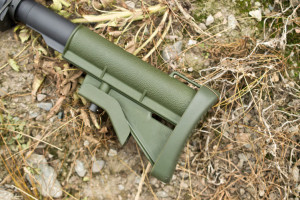
This all adds up to a very impressive barrel that marries accuracy with durability like no other. To put it in perspective a raw Colt Canada barrel blank actually costs more than a Colt USA finished barrel! Colt Canada rifles are wielded by some of the world's most fearsome fighters, including special operations units like our own JTF2, the British SAS and SBS, the Danish Huntsmen Corps, the Norwegian Forsvarets Spesialkommandos, and numerous others that we can't be told about. And many of those groups have selected the Colt Canada C8 at least in part because of the barrel that it's fitted with. If you need further proof of precisely how well made these barrels are, consider this: the barrels made by Colt Canada for use in the C7, C8, and SA-series of rifles are the exact same as the barrels they make for the C9 machine gun; a weapon capable of expending a 200-round belt in 12 seconds. The only difference is the profile.
Interestingly, while the barrels of both Diemaco models boast identical specifications as the Colt Canada C7 and C8 rifles, just aft of the barrel is the one significant concession to the commercial market Colt Canada has made: the feed ramps. When building a rifle for the military, ammunition is a fixed commodity; the only thing an issued rifle will be fed is full metal jacketed ball ammunition or blanks. But, commercial rifles need to tackle all varieties of ammunition, in all manner of grain counts. That means different bullets with different ogives, and that means slightly different feed paths. So in order to allow for those various ammunition varieties, Colt Canada fitted the SA20 and SA15.7 with extended feed ramps known colloquially as "M4 feed ramps." These involve deeper and longer feed ramps than the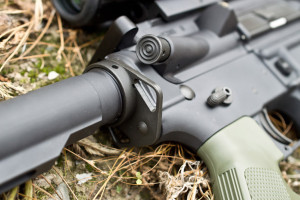
Which brings us to the third and final component responsible for the containment of all the pressure created by a firing rifle: the bolt head and body. Using the exact same bolt heads as any other Colt Canada product, all SA-series rifle bolt heads and bolts are magnetic particle inspected, manufactured and serialized in 100-piece batches, and examined and gauged to ensure they meet the specification laid out by the Canadian military's TDP, or technical data package. The bolt carrier on the commercial market rifles is a bit of a full-auto/semi-auto hybrid in that it does not have quite as much mass a fully automatic bolt carrier body, but also isn't quite as light as the normal semi-automatic bolt body. Although the installation of a full-auto bolt would have had no real effect on the rifle's function, Colt Canada was eager to ensure nothing even remotely resembling or relating to the term "fully automatic" was included with any rifle destined for commercial sales, so they opted to use the bolt carrier that is utilized in semi-automatic variants of the C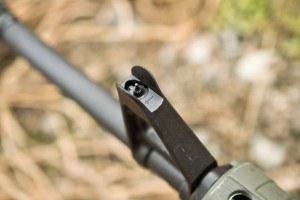
All other components in the SA-series of rifles are, not surprisingly, quite standard. But that doesn't mean it isn't utterly bereft of doodads. There is a well designed sling plate bolted up to the rear of the receiver that allows for all types of slings and sling clips to be used on either side of the rifle, and it does have an ambidextrous safety switch, although the corresponding bilingual-friendly "S" and "R" stampings are not found on the right side of the lower receiver. If you're wondering what "R" stands for, it's repetition or répétition, a position that is otherwise recognized as "semi" in purely Anglophonic countries. Coincidentally, the front sight post is also marked in a bilingual manner; there's simply an arrow indicating the direction the sight must be turned to bring the point of impact up. The front sight post itself is also slightly different from most AR-15 pieces as it is round rather than square and only 0.050" across as opposed to the roughly 0.075" across that most standard-issue square AR-15 front sight posts are.
So now for the million (or rather, $1800) dollar question... do these rifles shoot? To answer that, we brought along the reigning National Service Conditions Open Class Champion Ryan Steacy, and handed both the SA15.7 and SA20 to him for feedback. An accomplished competitor with more time and skill behind an AR-15 than we'll probably ever have, Steacy remarked that both the SA15.7 and SA20 felt identical to the rack grade Colt Canada rifles he has competed with for years, and went on to say the only thing they're missing is the wear and tear inflicted upon issued rifles by new recruits and errant troops. Colt Canada claims to have expended over 30 billion rounds of ammunition in testing the C7 and C8 platforms upon which these rifles are based, and each and every civilian Diemaco rifle undergoes an exte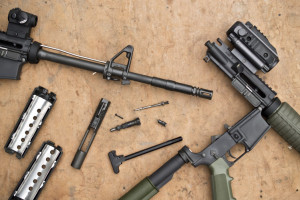
Accuracy was also as expected, and the smallest groups recorded with the apparently less accurate SA20 used 77 grain projectiles to make the best use of the rifle's 1:7 twist rate to print five shot groupings measuring 1.14" across at 60 yards with Remington 77-grain Match factory ammunition and 0.74" across with a 77-grain SMK projectile loaded over 23.5 grains of Varget. For those that are wondering, that correlates to 1.8 MOA for the factory ammunition, and 1.2 MOA for the reloads, which is quite good for a bone-stock rifle shot from the prone position. With more time, load development, and every gun writer's favourite tool (a rifle rest) we have no doubt the SA-series of rifles are capable of producing sub-MOA results. That it's only two tenths away from that performance with loads developed for a different AR-15 entirely is a testament to its capability and the AR-15's excellent out-of-the-box ergonomics.
But those basic numbers and that reliability record do not tell the whole story. There is always that intangible effect that proves so difficult to relate. In the case of the Diemaco SA-series of rifles, that intangible sensation is dominated by the overwhelming sense of solidness the rifle imparts. Thanks in part to the tighter tolerances demanded by the Canadian TDP and the greater attention to detail allowed by Colt Canada's smaller production runs these rifles are all very well manufactured and equally well assembled. And it shows. The hand guards, although basic, are comfortable and very firmly affixed. All the various releases, catches, and switches work crisply and without any play or excess movement. The bolt travels fore and aft without any binding or undue play, and the finish is uniform and in the correct (and very tough) Type III hard coat anodizing throughout. It goes without saying that the upper and lower receivers mate together absolutely perfectly, and true Diemaco fans will be happy (maybe?) to learn that the Accuwedge is still in there, just to make disassembly and re-assembly a wee bit more fun. The barrel's finish is perfect inside and out, the flash hider expertly machined and fitted, and even the bolt head bears out Colt Canada's attention to detail in the finely hewn batch number and "MPD" script engraved upon i
So would we buy one? Truth be told, at the original price point these rifles debuted at, it was a possibility... but not a strong one. For most, a $2,200 rifle such as the SA20 is not an insubstantial purchase, and we'd personally have struggled with the value proposition that price presented. Yes they are, in our opinion, the most well-manufactured AR-15s currently in production, but there's no getting around the simple fact that quite a few of the design benefits so loved by guys like the SAS and JTF2 are just answers to questions no civilian is asking. If it ever hits -68 Celcius here in Vancouver, we'll be pinching ourselves to wake up, not grabbing a rifle and worrying about the possibility of freezing our cheek to the stock! But now that the price has been lowered so substantially so as to bring these Diemaco rifles into the price range of higher end rifles from a huge array of manufacturers, it's much easier to justify the decision to buy one, especially since the Diemaco product carries a two year extended warranty with full service offered right out of a warranty centre in Ontario. Add in the value of the included Otis cleaning kit, super awesome Franzen magazine well lock (which we are told meets the requirements for safe storage), and the knowledge that the retail price is going to support a Canadian manufacturer that pays a fair wage to the 100 or so Canadian employees working at the factory, and we're comfortable saying that yes, indeed, these rifles are worth the money. Hell, we may just end up taking our own advice and trying to find one to call our own quite shortly! Speaking of, if anyone wants a really good deal on the Para-Ordnance LTC reviewed elsewhere in this issue...
Sidebar: Colt Canada: A Manufacturer Unlike Any Other.
One of the most important things to understand about Colt Canada is that they are quite unlike any other firearm manufacturer in the country. Relatively small and employing roughly 100 people at the Kitchener, Ontario factory, they are a strategic defe
It also means the standard to which Colt Canada's manufacturing processes are held is slightly different. Simply put, the production of a rifle that does not work, or the manufacturing of a replacement part that does not fit is not an option. When rifles from this factory are being dispatched directly to members of teams like JTF2 and the SAS in theatres of operation they are expected to perform. Which brings us to the Canadian military's Technical Data Package. Having selected the American M16A2 in trials as their preferred design to replace the venerable C1A1 rifle in the mid eighties, the Canadian military had some concerns about the M16A2's capabilities, and decided to draw up a unique TDP that used the M16A2 as a basis for what would be a uniquely Canadian rifle; the C7.
That TDP would eventually culminate in 168 design changes between the Canadian C7 and the American M16A2 it would be based on. Some of those changes are miniscule and unnoticeable to most, and some would be more dramatic, but they all ensured the C7 would be assembled and tested to a slightly higher standard than the American specifications required. Canadian rifles would be required to work at more extreme temperatures than the American rifles, would be required to sustain more abuse than American rifles, and would be manufactured to slightly higher tolerances than the American rifles. In short, they would take the American standards to the next level. They could do this because while the American contract for the M16 and M4 rifles involved purchase orders and manufacturing capacities well into the realm of five and six figures, the Canadian rifle production would be dramatically smaller, something of a boutique affair by comparison.
And that remains the case today. Although the Kitchener factory's manufacturing capacity isn't something that can be explicitly admitted, it's safe to say the plant reconditions, services, and produces less than a tenth of what its American counterpart is responsible for. As a result, each rifle is given more attention, and the factory itself can more readily adopt higher standards of quality. For example, each one of the employees responsible for the production of parts is also a trained metrologist, meaning they have the training necessary to measure their parts in the most precise mann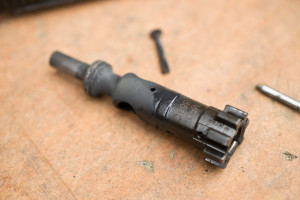
Many private enterprises manufacturing AR-15 rifles cannot claim that level of quality control for one reason: it's expensive. Employing a work force as skilled as Colt Canada's, especially in a place like Ontario, isn't cheap. Conversely, large scale military contractors like Colt Defense that are responsible for the production of thousands of rifles in a given week cannot feasibly spend the time required to ensure such standards are met as doing so would grossly inflate the American defense budget. Colt Canada find themselves in a happy middle ground between the two, where their existence as a military contractor for the Canadian government initially allowed them to invest in the training and tools needed to make extremely high-grade guns, without requiring the higher volume that would have required they compromise on quality. This set them up to garner the attention of similarly sized armies from the Netherlands and Denmark, as well as various special operations units from around the world; the majority of which cannot be discussed. As a result, their new commercial rifles benefit from all the same quality controls those military contracts have subsidized, leading to a better product at a lower price than would otherwise be possible.
Also, since the factory is required to meet everything from ISO to NATO AQAP (Allied Quality Assurance Publications) standards, there can be no differentiation in parts between the SA-series of rifles destined for the civilian market and those rifles headed for more hostile locales. NATO inspectors regularly tour the facility and can demand parts be examined and tested for interoperability, specification, and quality assurance testing. Any and all parts available within the factory must meet the specification for that part, meaning that each part must be within the allowable tolerance set out in the military's TDP. This means Colt Canada cannot cut corners and manufacture any parts specific to their commercial market guns, as this would lose them their various certifications, and have very far-reaching legal ramifications for the company. So, all parts contained within the SA-series of rifles are actually the exact same parts that are used in everything from Danish service rifles, to police carbines, to the C8 Special Forces Warfare weapons used by the infamous Special Air Service. As far as Colt Canada is concerned, there is no such thing as a "commercial" part; these commercial rifles are merely a semi-automatic assembly of the exact same components that would otherwise end up in a police or military rifle.